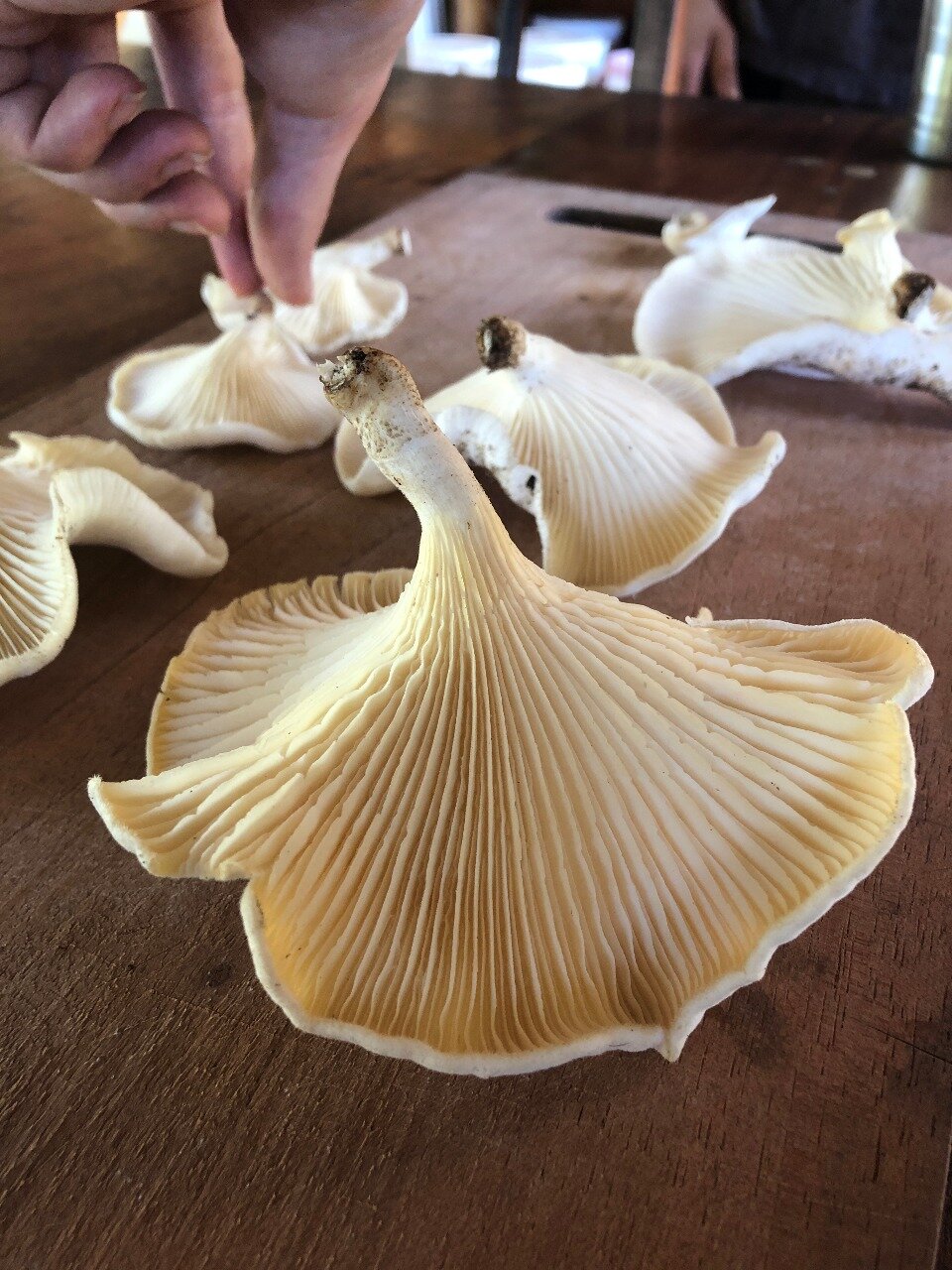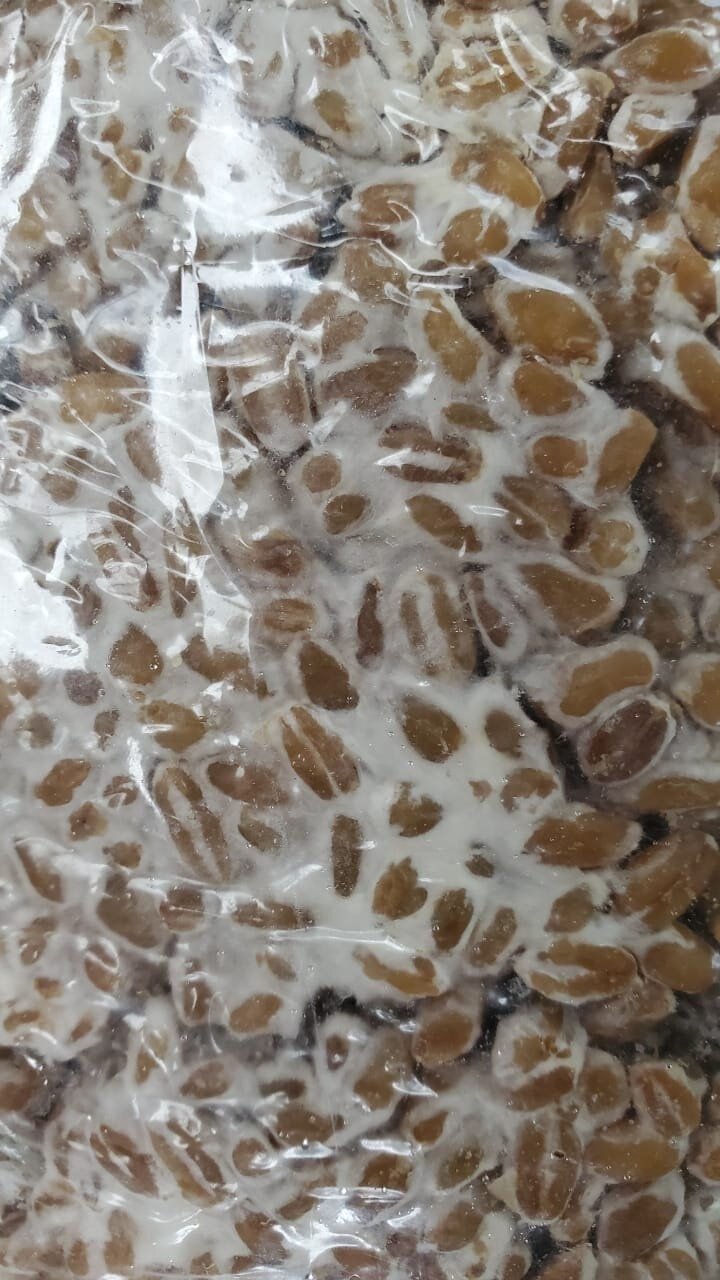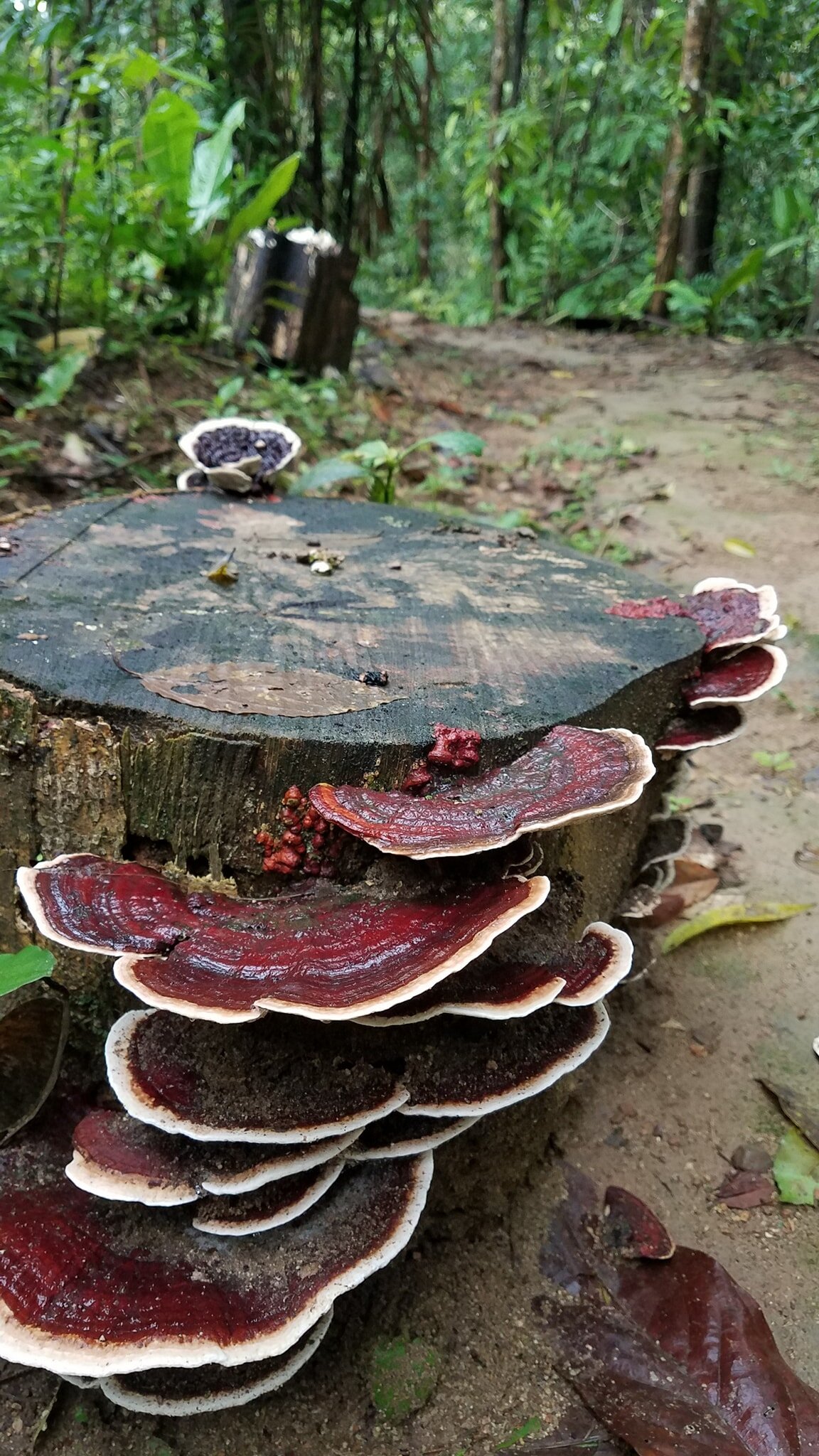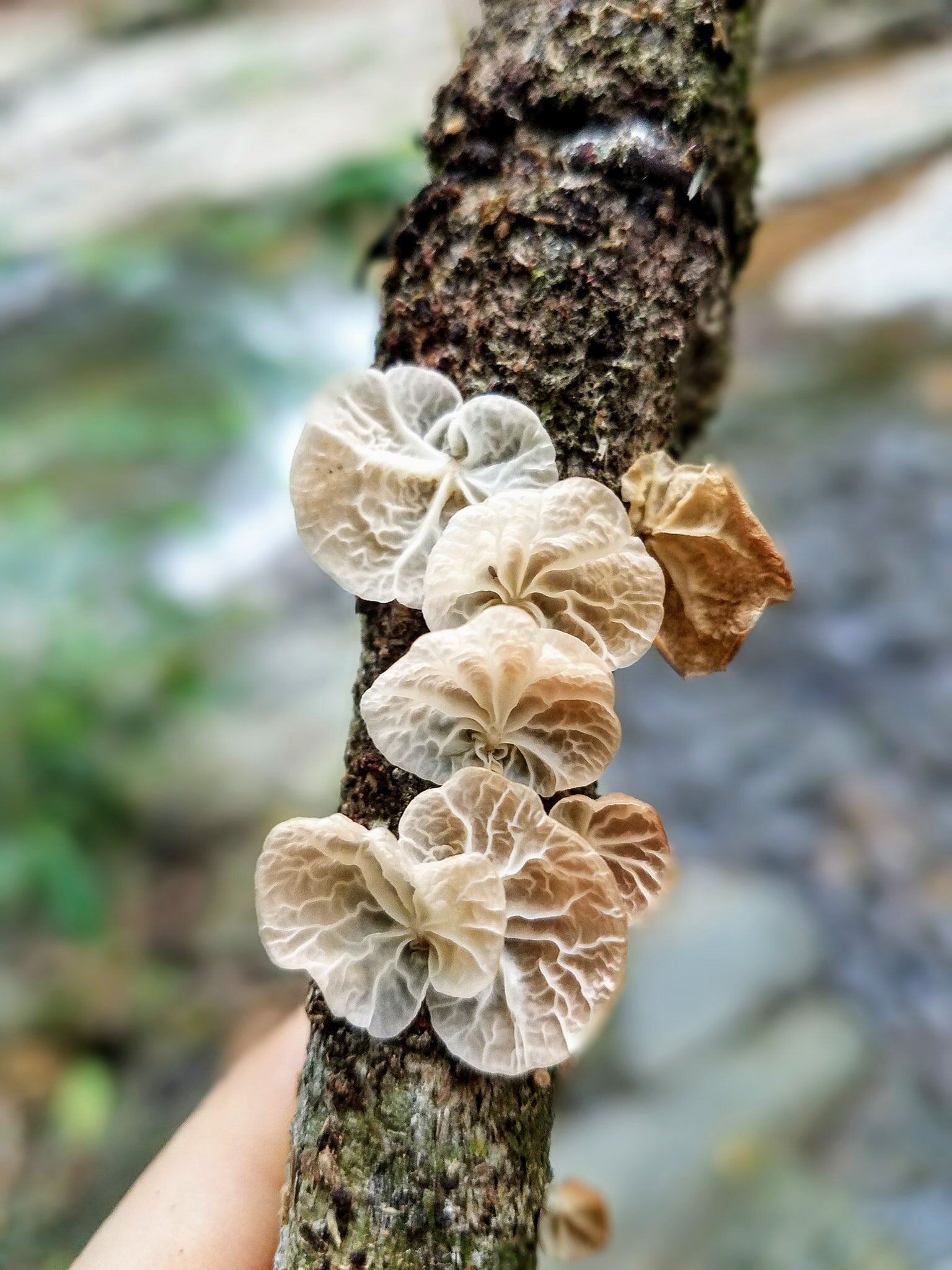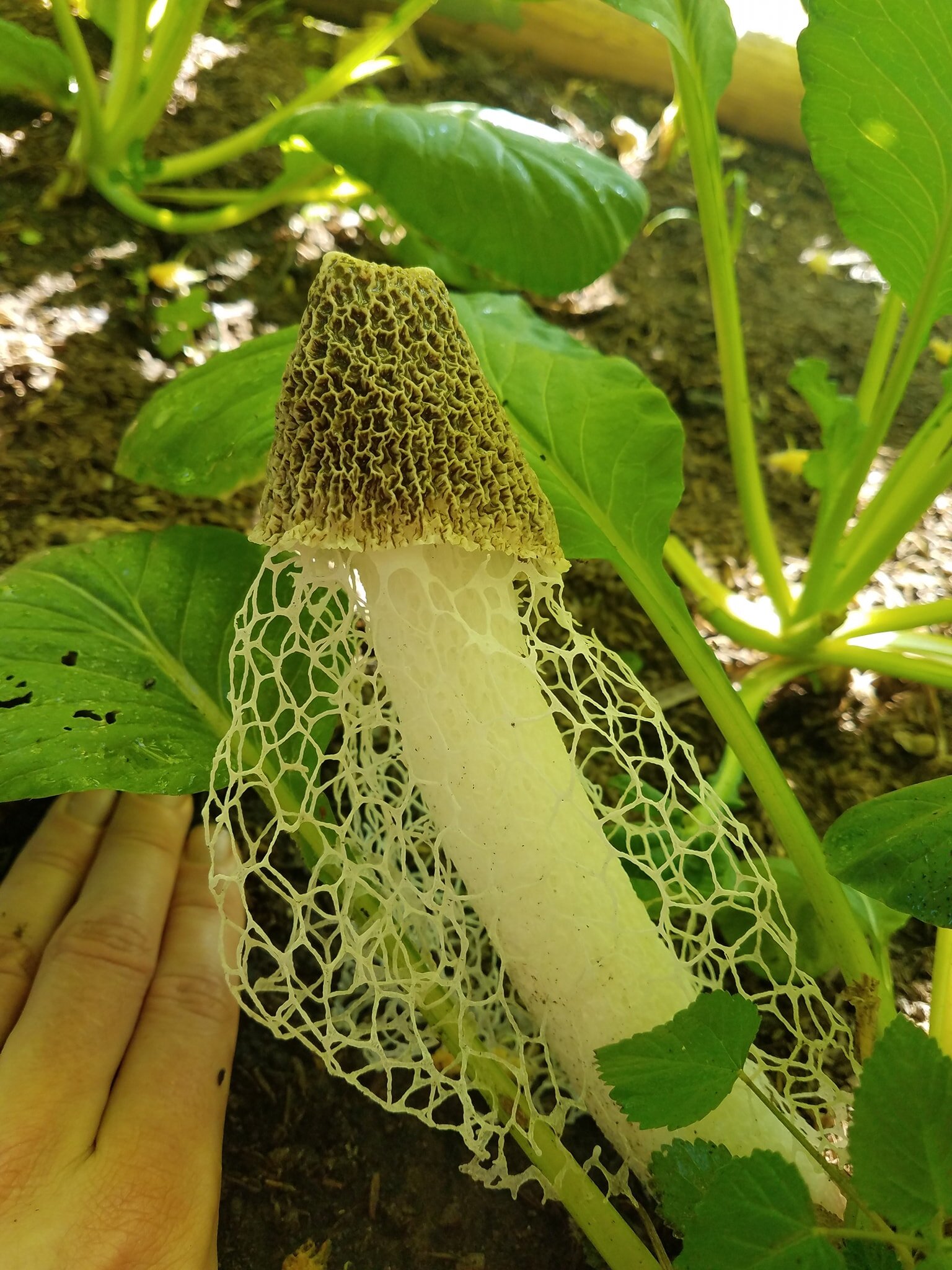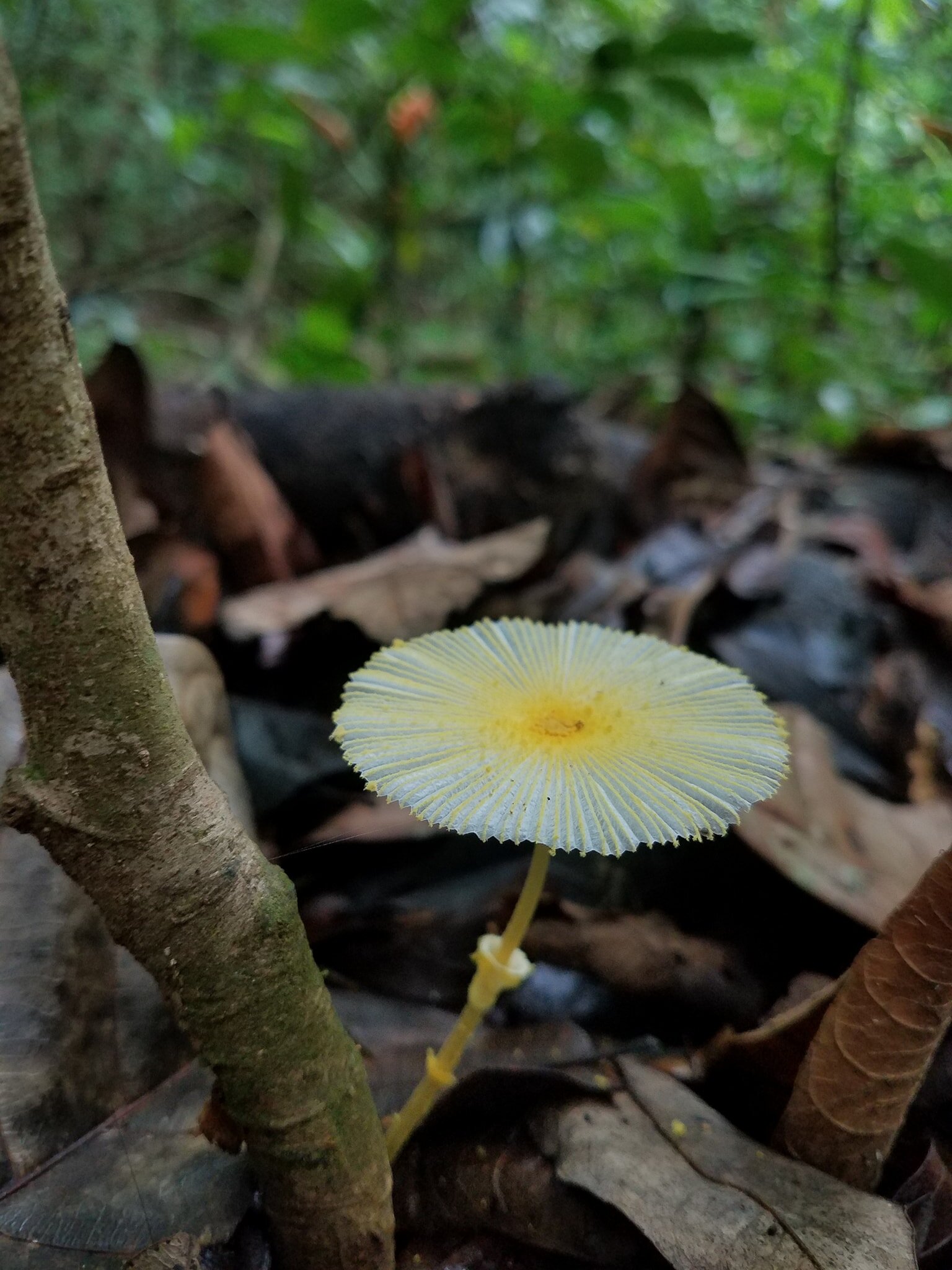Natural Log Cultivation of Shiitake Mushrooms in the Tropics
By Nico, Apprentice 2020
Apprentices inoculating the logs
Managing an orchard space involves dealing with a lot of biomass, especially here in the tropics. From weeding, to pruning, chopping down NFTs that are getting way to big, etc. We are then left with a lot of plant material. Most of this biomass is returned to the soil around our beloved fruits trees, decomposed by microorganism and turned into a nutritious soil, hence completing the life cycle of our healthy ecosystem. But, every once in a while we are faced with the dilemma of having to take down bigger trees. At the Rancho we always try to honor the life of those trees by using them in the best way possible. Following permaculture principles, we don’t see any by-product as waste but rather as a resource. So when we had to take down a magnificent Pau d’arco for safety reasons, we took this opportunity to give it second life. The biggest logs were milled by 2 local sawyers, and are currently drying in the barn to be turned into the next piece of beautiful furniture. We used the smallest logs/branches to make a tincture, since the tree has so many wonderful medicinal properties. The bark, a powerful botanical medicine that restores the immune system, has been cited traditionally to treat the following health problems: anaemia, arteriosclerosis, arthritis, asthma, bronchitis, boils, cancer, candida, colitis, colds, constipation, coughs, cystitis, diabetes, diarrhoea, emphysema, dysentery, eczema, fevers, flu, gastritis, gallbladder problems, infections, liver problems, lung problems, leukaemia, pain relief, parasites, prostatitis, pyorrhoea and wounds!
*Learn more about Plants as Medicine in our annual workshop*
Finally, having noticed that the wild Oyster mushrooms are growing pretty well on this species once dead, we decided to use the medium sized logs that were too small to be used for furniture, to tackle one of my many long-time wishes: growing shiitake mushrooms. Shiitake is one of the most popular and important mushrooms in many countries. It has a long-standing history as a culinary delicacy and an immune system booster that produces lentinan, which is recognized in Japan as an
anti-cancer drug. An anti HIV property has also been detected along with other health benefits that are still being studied. It is widely cultivated not only in Southeast Asia but also North America, Europe, Australia and New Zealand, and each year more and more small scale farms are popping up.
Wild oyster mushroom harvest
Even though growing shiitake in bags of synthetic logs is more common due to labor and material costs for bigger scale production, we decided to go for the traditional natural log cultivation, as it has been grown for thousands of years. So if you’re thinking about starting mushroom cultivation, here are a few tips on how to do it:
Selecting the logs
Mushroom spores
The most common species for growing shiitake in temperate climates are Oaks, Poplar, Alder, Maple, Birch, Elm and Sweetgum. On softwoods such as alder and birch, the mycelium will colonize the logs faster, but hardwood will give you a longer production time and less risk of contamination by other undesired mushrooms or molds. Growers should check to see what kind of suitable trees are available locally. Once you know which tree you will use as a substrate, you can start selecting and cutting the logs. Shiitake grows best in the sapwood and cambium because they contain the most readily available nutrients and have higher moisture content than the heart-wood, so the larger the sapwood area, the better. As Shiitake is a saprophyte, it can only grow on dead wood, so you want to make sure you inoculate your logs at least 2 weeks after the tree was chopped down so all the wood cells are dead. If inoculated sooner, the trees' natural chemical defenses against invasion may still be active and could prevent the shiitake fungus from growing. It is a good idea to soak the logs in water 24h before inoculation in order to increase the moisture content above 40%. The Ideal size for logs is about 1m in length so they are easy to manipulate, and a diameter somewhere between 7 and 15 cm (3”-6”). You want to select logs with an intact bark and try to keep it on as long as possible, as it creates an extra layer of protection against other wild molds, fungus or contaminants. Lime water can be applied on the exposed surface at the end of the logs for the same reasons, or you can also seal them with wax when doing the next step.
Inoculating the Logs
Inoculation is the introduction of the live fungus into the log. This live fungus is mixed with sawdust, grains, and other nutrients or is grown on a wooden dowel. This mixture, called spawn, is the mycelium of fungi growing on a substrate and prepared for propagation of mushrooms.
Brushing wax onto the ends of the logs
To inoculate, simply drill holes into the logs and fill them with spawn. The holes should be 0.8 cm in diameter and about 3cm deep. As mycelium spreads faster along the wood grain than across, you can place those holes 5cm apart around the log, and 10 to 15 cm apart lengthwise. Place the next row of holes diagonally, creating a diamond pattern and fill them with the spawn. Once all the holes are filled, seal them with melted beeswax to prevent drying and contamination.
Contamination is the most common reason of failure in mushroom cultivation, hence it is really important to always work in a clean environments and with sterilized tools. The more you pay attention and dedicate time towards this, the higher the chance of success.
Aftercare
Once all your logs are inoculated you want to let them sit in a warm and shaded area, in order to give the spawn the best conditions for propagation. What you’re looking for is a good balance of humidity, shade, ventilation and temperature. Each strain of mycelium has its optimal conditions, so make sure to get as much info as possible to find the perfect place. Too much heat with high humidity increase the risk of contamination, and you can balance that with good ventilation, but too much ventilation will dry out your logs, and you want to keep a stable humidity level. Think of it as having to choose a place to hang your hammock if you had to spend a whole day in it: you want it to be warm and cozy, but not in direct sunlight so you don’t start sweating. You want to have access to water (humidity) and a nice small breeze to rock in your hammock while you fall asleep.
Inoculated logs in a warm, shaded area
Give it Some Time
There you have it! Your logs are now freshly inoculated with the shiitake spawn (or any other variety you choose). The only thing left to do is give it some time to propagate and colonize the log before fruiting starts. Don’t forget to control humidity level and temperature, and check for any contaminants that might spread and steal the thunder from your precious shiitake. For fruiting to start, you can either let nature do the work or induce fruiting through different techniques that we will develop in next post, when or shiitake spawn is ready to fruit. Stay tuned for more info about fruiting, harvesting and all the next steps in your mushroom cultivation!
want to learn more?
Don’t forget to check out our yearly workshops and our apprenticeship program to get some hands on experience in sustainable living in the tropics!
Yearly workshops related to plants and homesteading include:
Happy mushroom growing!



